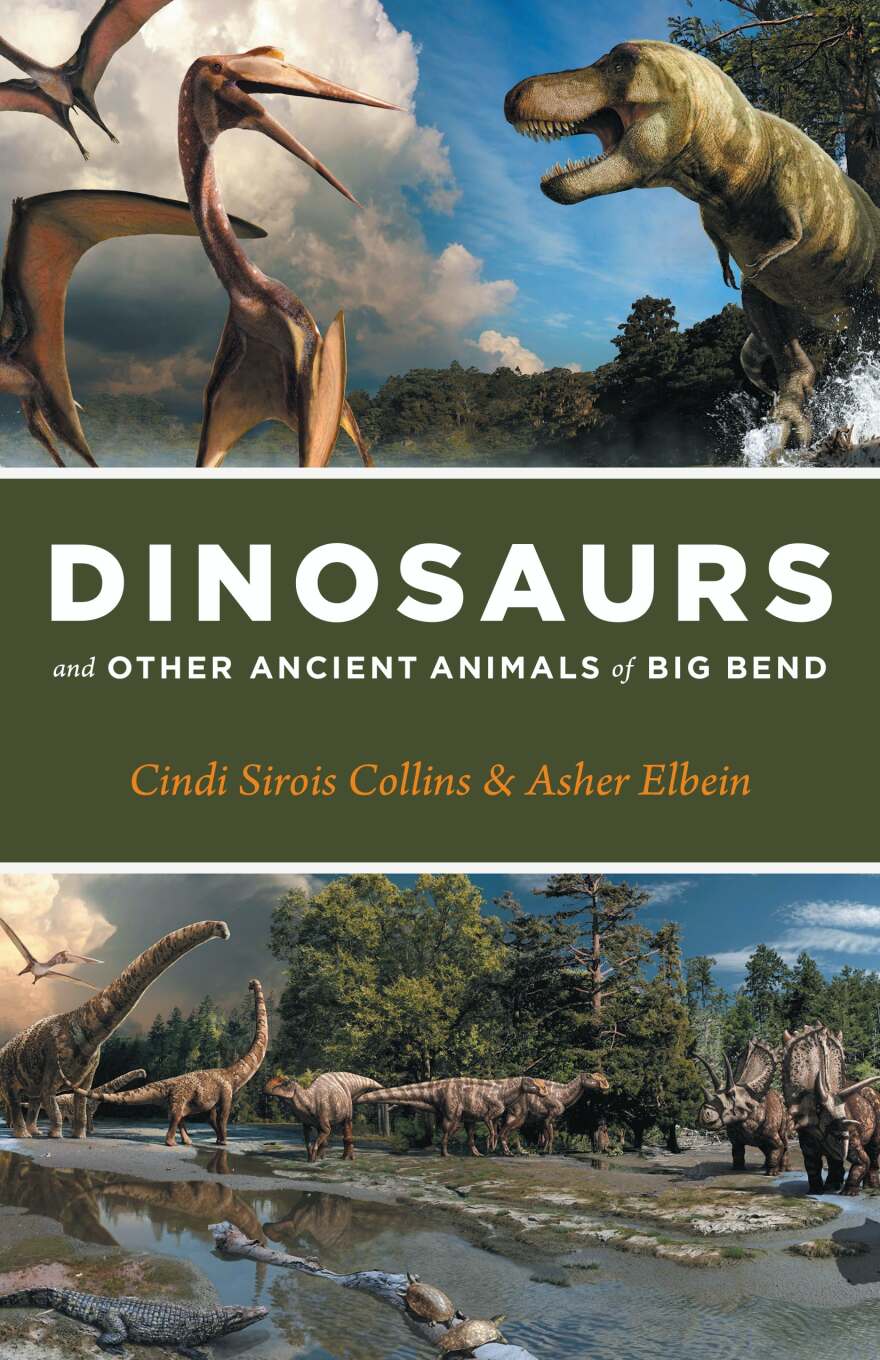Big Bend National Park first enthralls visitors with its majestic desert-mountain landscapes. It takes time to appreciate the life thriving here – in one of the planet's most biodiverse deserts.
But today's creatures are only one chapter. Paleontologists have found fossils of some 1,200 species in Big Bend – more than in any national park. It's a singular record, spanning 130 million years.
A new book tells that epic story. In “Dinosaurs and Other Ancient Animals of Big Bend,” from UT Press, Cindi Sirois Collins and Asher Elbein bring vanished creatures, and vanished worlds, to life.
Collins was a science teacher for 25 years, and through geology camps sponsored by Texas A&M, developed a fascination with rocks and fossils. She was primed to appreciate the park's Fossil Discovery Exhibit, when she visited it in 2017.
But she felt something was missing.
“It was just so intriguing,” Collins said, “and I was looking for the reasons that they named the animals what they did, like Terlinguachelys, and there was no book – not at the ranger station, not online or anything. So I went and started researching it.”
Collins contacted park geologist Don Corrick, who agreed a book was called for, and shared the park's fossil inventory. Next, Collins pitched UT Press. The publisher was the obvious fit, as UT houses many of Big Bend's fossil finds. Photos from those collections, along with illustrations by Julius Csotonyi, adorn the book.
In the writing, Collins partnered with Asher Elbein – a freelance author specializing in natural history.
“Cindi and I worked really hard to make sure we talked as much about what fossils are,” Elbein said, “and how they're dug and who has dug them, instead of just listing out names like it's a checklist.”
The book is rigorous with the paleontological facts. And those facts alone are gripping.
In the deep Cretaceous past, what's now Big Bend was submerged by a shallow sea. Strata here reveal the sea's life, from ammonites and sharks to reptiles known as mosasaurs, which Elbein compared to “giant, swimming komodo dragons.”
Near the end of the Age of Reptiles, the sea receded, and this land became a swampy delta, and then a forested plain. These were Big Bend's dinosaur days – and account for its “sexiest” fossils. They include Quetzalcoatlus, a pterosaur with a 35-foot wingspan, and the 80-ton Alamosaurus, North America's largest known dinosaur.
Later yet, amidst roiling volcanoes, Big Bend sustained a host of strange mammals – from vanished rhinos and horse ancestors to predatory ungulates known as “hell pigs.”
But the book isn't just a field guide to ancient animals. In vivid prose, it captures the transformations in Big Bend's landscapes and ecosystems.
“A lot of times people think of geology in terms of just rocks,” Elbein said. “But they don't see the fact that when you speed up the clock enough, the continents dance and the landscape ripples and moves and is dynamic enough to make a story that you can tell.”
Each section begins with “field notes,” that transport the reader into a day-in-the-life of ancient Big Bend.
“Dinosaurs lived day-to-day too,” Elbein said, “and so did ancient mammals, and so did the marine reptiles that swam through Texas when it was an ocean. These are all alien worlds to us. But they were, at one point, the world. At one point they were Thursday at noon.”
The result is a volume to engage diverse readers – from dinosaur-obsessed youths to veteran Big Bend explorers.
“We say the book is for 6-year-olds to 106-year-olds,” Collins said. “There is a little something for everybody.”






